For "Travel Tuesday", we aren't leaving The Texas Hill Country until we have toured The Natural Bridge Caverns.
Yeah.... in Texas, you take your shade where you can find it and you're thankful for it.
________________
Here is plenty of shade: Texas, Underground
"The Natural Bridge Caverns take “deep in the heart of Texas Hill Country” to a whole new meaning. With depths reaching 260 feet underground, it is Texas’ largest-known cavern and consistently ranks as one of the state’s top tourist destinations.
Discovered in 1960 by students at St. Mary’s University, the cavern, located just west of New Braunfels, has delighted visitors for decades with lantern-led tours, archaeological gems, and natural formations like “soda straw” stalactites occurring along hidden passages.
Originally thought to consist of only a modest-sized cave under a 60-foot naturally occurring limestone bridge, it wasn’t until four students with St. Mary’s spelientology club took a routine caving expedition to the next level that the massive chambers of the cavern were discovered.
On March 27, 1960, students Orion Knox, Al Brandt, Preston Knodell and Jo Cantu decided to split off from the rest of their group, who were exploring the original cave of the Natural Bridge Caverns. Having visited the cave three times prior, the group of four was curious to see if there was anything more to the cave.
As the smallest member of the group, Knox, then 19, made his way through a tight crawlspace with a rock hammer and a carbide lamp. When he emerged on the other side, he was welcomed by a great expanse of darkness. He called back to the group, “Hey, we have may have something here.”
That “something” was the largest underground cavern in Texas, and it would take the relentless efforts of the landowner, rancher and widow Clara Wuest, to bring its development to fruition. When Wuest first approached the state and national parks agencies to seek their assistance in developing the cavern, she was turned down. But this setback didn’t stop her. She mortgaged her ranch to fund the project, and for 2 years, cavers and workers, including Orion Knox, worked 14-hour days to develop the site. By completion, they had excavated a half-mile route into the cavern, complete with paths and tunnels for visitors to navigate. Wuest opened the cavern to the public in 1964, and tourists began flocking to the attraction, giving a significant boost to the early years of Texas’ tourism industry. In 1971, the Natural Bridge Caverns were listed as a registered U.S. natural landmark.
First discovered by student explorers, today the cavern aptly remains a principal site of study. The Center of Archaeological Research at the University of Texas at San Antonio has been involved in the excavation of the landmark, and the cavern has provided students with an enlightening, hands-on dimension to their geological studies throughout the years.
 Certainly for visitors of any age, the cavern provides an exciting learning experience. The Lantern Tour recreates the ambience of a dauntless exploratory expedition to the delight of its young patrons. Chalkboard drawings and lessons are replaced with palpable wonders such as stalagmites, stalactites and cave ribbons. Children can take turns on the mining sluice, scrutinizing their fortunes as they sift through buckets to discover fossils, gems and arrowheads. Some arrowheads and spearheads found during the original excavation dated from 5,000 B.C.
Certainly for visitors of any age, the cavern provides an exciting learning experience. The Lantern Tour recreates the ambience of a dauntless exploratory expedition to the delight of its young patrons. Chalkboard drawings and lessons are replaced with palpable wonders such as stalagmites, stalactites and cave ribbons. Children can take turns on the mining sluice, scrutinizing their fortunes as they sift through buckets to discover fossils, gems and arrowheads. Some arrowheads and spearheads found during the original excavation dated from 5,000 B.C.
The Natural Bridge Caverns’ beauty dazzles observers and captivates photographers. In 2003, USA Today classified the Natural Bridge Caverns as one of “10 Great Places to get nature on film.” In addition to commercial praise, the cavern also enjoys national recognition from the United States Department of the Interior as part of the National Register of Historical Places.
Whether it’s a classroom field trip, a summer daytrip, or scratching an itch for adventure, a visit to the Natural Bridge Caverns will not disappoint. To learn more, visit www.naturalbridgecaverns.com." By U.S. Sen. John Cornyn
____________
Natural Bridge Caverns
"Natural Bridge Caverns is the largest Texas show cave and one of the most impressive because of its size and beauty. You'll love the totem poles, fried eggs, and massive formations.
The name of the cave comes from the natural stone bridge, all that is left of a huge, collapsed room that now forms the entrance sink. The cave is unusual in that much of it is formed in the upper member of the Glen Rose Formation (Cretaceous age), which is not usually cavernous.
From the first room in the cave, Pluto's Anteroom, the passage slopes steeply down through Sherwood Forest, 55 m below the entrance and to the deepest point on the trail. Carefully built switchbacks wind through the totem poles.
Next comes the deep canyon of Purgatory Creek, which sometimes floods above an ingeniously engineered concrete bridge, which is attached to one wall 10 m above the floor.
Next is the Castle of the White Giants, named for its massive speleothems.
Near the end of this large room is Grendel's Canyon, which leads down to the deepest point in the cave some 76 m (250 ft.) below the entrance.
Stairs then lead to the Hall of the Mountain Kings, a huge dome, the floor of which is covered with flowstone, stalagmites, columns, and fried eggs. Another man-made tunnel leads out to the surface.
The owners discovered the "South Caverns" by drilling boreholes on the opposite side of the entrance sink. This 450-m long section is being carefully developed with all-concrete trails and minimal damage to the cave. "
From: http://www.utexas.edu/tmm/sponsored_sites/tss/showcaves/tssnaturalbridge.htm
_____________
Hidden Passages Tour
"Natural Bridge Caverns has two world class caves for you to explore. On the Hidden Passages Tour, light and darkness combine to enhance your exploration of huge underground chambers decorated with some of our most rare and delicate formations. The Hidden Passages are highly decorated with unusually long 'soda straw' stalactites, waves of 'cave ribbon' and a profusion of intriguing 'welt and turnip shields.' Another unique experience only offered on this tour occurs when all the lights are turned off and you experience total darkness. You haven't seen all of Natural Bridge Caverns until you have experienced the Hidden Passages."
_____________
History Of The Natural Bridge Caverns.
"Brian Vauter, Cavern Geologist and Operations Manager for Natural Bridge Caverns, explains how the Caverns were discovered. He describes the amazingly diverse rooms, the crystal pools, and some of the fossil remains found within the cave."
______________
BACKGROUND GEOLOGY

"Visitors to the caverns walk through different layers of limestone, a sedimentary rock. Geologists theorize that during the Cretaceous period, a warm, shallow sea covered much of Texas. Sediments and dead marine organisms collected on the ocean floor, compacted and formed the different limestone layers. Geologists give different names to the various layers, and visitors to Natural Bridge Caverns will find the Glen Rose and the Kainer (Edwards) layers. The Glen Rose, as the oldest rock layer, contains the lowermost chambers, while the Kainer forms the Natural Bridge." More at: http://www.naturalbridgecaverns.com/geology.aspx
___________
Cave Without A Name, 12 miles from Boerne
"Cave Without A Name has a short trail but is a wonderful cave. A staircase spirals down a pit and opens into a 7-m-high by 12-m-wide passage decorated with large speleothems. The trail ends after 186 m at a large stream passage.
Cave Without A Name is Texas' best kept secret among show caves. The lack of advertising and the slightly off-the-beaten-path location belie the cave's quality. Its entrance pit has been enlarged to accommodate a staircase that spirals down to a depth of 24 m. The pit opens into a passage measuring 186 m long and averaging 7 m high by 12 m wide. Large columns, stalactites, stalagmites, and draperies divide the passage into four distinct sections. The speleothems include some of best rimstone dams and cave bacon in Texas.
The cave was discovered in the early part of the 20th century when steam was seen rising from the pit entrance one cold winter morning. A rock that partially covered the pit was moved, but no one went into the cave until the 1920s when it was necessary to rescue a goat. In 1927, a group of boys dug open a short crawlway at the base of the entrance pit and found the main part of the cave. Between this discovery and its commercialization, the cave's entrance area hid a moonshine still during prohibition years. More at: http://www.utexas.edu/tmm/sponsored_sites/tss/showcaves/tsscwan.htm and: http://www.cavewithoutaname.com/
______________
"Cascade Caverns offers you an opportunity to go back in time 140 million years. The more we know about caves, the more we can tell about geological history. Also the more we see what nature has done and the time involved, the smaller we seem to be.

In the beginning all the area of rock we are now in was once beds of silt mud and shell on the bottom of the sea. The erosion by wind and water has eaten away material from the high land and deposited it below the sea, sometimes several thousand feet deep. During the formative period of the earth these mud beds raised above the sea and dried out. They cracked much like a small mud puddle does, the mud shrinking and cracking in rough squares. This is the start of the cave. The lifeline of the cave as it is known. When water entered these tiny cracks it dissolved the then soft material enlarging some of the cracks. Later fresh water streams flowed through these cracks bringing vegetation and other organic matter from above, which rotted causing carbonic acid to form which eats away at the limestone, further enlarging the cracks. This action is still going on.
The most common forms are flowstone on walls and floors and stalactites from the ceilings. There are few stalagmites growing upward because the cave we now see is only the top portion of the whole original cave. During the major period of formation growth the cave extended much deeper, therefore these types of formations have been covered by centuries of debris. More at: http://www.cascadecaverns.com/science/geology/ and http://www.cascadecaverns.com/caving/the-tour/
_______________
What Exactly is Karst?
"Karst is a landscape formed from the dissolution of soluble rocks including limestone, dolomite and gypsum. It is characterized by sinkholes, caves, and underground drainage systems. Nearly all surface karst features are formed by internal drainage, subsidence, and collapse triggered by the development of underlying caves (Palmer, 1991).
The features of a karst system.
Rainwater becomes acidic as it comes in contact with carbon dioxide in the atmosphere and the soil. As it drains into fractures in the rock, the water begins to dissolve away the rock creating a network of passages. Over time, water flowing through the network continues to erode and enlarge the passages; this allows the plumbing system to transport increasingly larger amounts of water (Gunn, 2004). This process of dissolution leads to the development of the caves, sinkholes, springs, and sinking streams typical of a karst landscape.
Why is Karst Important?
Dissolution associated with karst development in central Texas limestone has created a complex underground water flow network that includes caves large enough for humans to access. Rainwater travels through the network, controlled by the Balcones fault system, until it reaches the water table (Ferrill et al., 2004). The karstified limestone acts as an aquifer where water can be stored and later extracted by humans.
Two million people in central Texas get their drinking water from the karst aquifer known as the Edwards Aquifer (Sharp and Banner, 1997). This resource is especially important for central Texas as the region becomes more urbanized. With a higher density of people, central Texas will face higher demand and increased pollution. Just like rainwater, pollutants can easily pass through the karstified limestone. Another difficulty is that streams and surface runoff entering the aquifer via sinkholes and caves bypass the natural filtration produced by seeping through soil and bedrock. This direct recharge quickly replenishes the water supply; however, it also leaves the aquifer particularly vulnerable to contamination (Drew and Hötzl, 1999). From: http://www.esi.utexas.edu/outreach/caves/karst.php
______________
On This Day:
Watson and Crick discover chemical structure of DNA
"On this day in 1953, Cambridge University scientists James D. Watson and Frances H.C. Crick announce that they have determined the double-helix structure of DNA, the molecule containing human genes.
Though DNA--short for deoxyribonucleic acid--was discovered in 1869, its crucial role in determining genetic inheritance wasn't demonstrated until 1943. In the early 1950s, Watson and Crick were only two of many scientists working on figuring out the structure of DNA."
_______________
Final episode of M*A*S*H airs, Feb 28, 1983:
"On this day in 1983, the celebrated sitcom M*A*S*H bows out after 11 seasons, airing a special two-and-a-half hour episode watched by 77 percent of the television viewing audience. It was the largest percentage ever to watch a single TV show up to that time."
____________
Yesterday:
I put my back out on Sunday, so I am moving slowly. Unfortunately, my HMO is also moving slowly and hasn't issued their approval to get it cracked back in place yet. When I changed health plans it meant that I have to go to a new, different chiropractor. Red Tape!

Then I realized that the water tank wasn't going to be practical under there, too, as the water connections would be too close to the converter. We had installed the tank a long time ago when the brown fridge was going to be under the sink, but that changed, and it now leaves that space for the tank. So I unscrewed the left side bench top, and the tank is nearly out, but it was time to quit for the day.

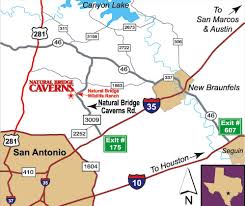

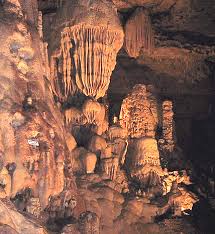

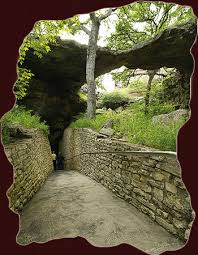


.jpg)


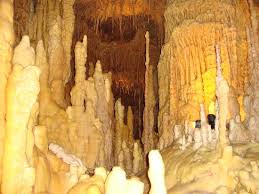



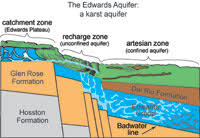
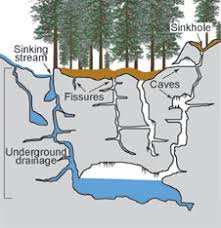















2 comments:
I didn't know that insurance would cover a chiropractor, will Medicare cove one, also? My wife and I have only Medicare.
Thank you for your comment, DD.
I have free TX Health Spring Ins. in place of Medicare, as it covers more things, at a better co-pay rate. They cover a chiropractor visit as a specialist co-pay rate.
I just changed plans with TX Health Spring, and I am now with Sadler Clinic, so I have to get re-established with new doctors. That's the hold up.
Happy Tails, and Trails, Penny.
Post a Comment